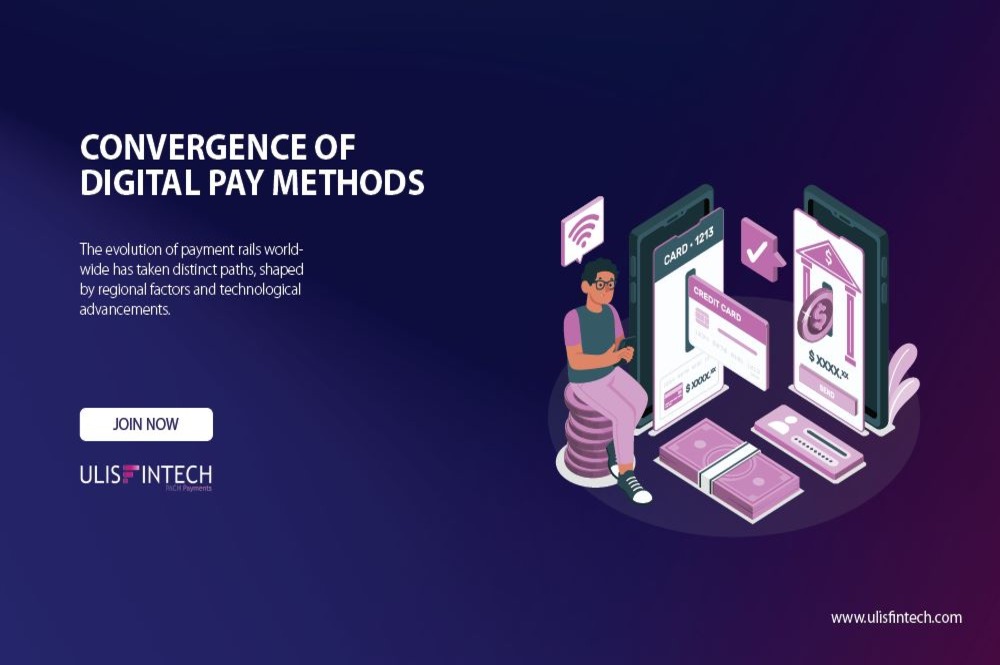Apple Pay is the undisputed leader in Mobile Payments
Jul 09, 2022 - 7 MINS READ

Apple Pay is the undisputed leader in Mobile Payments
Just a few years ago Apple Pay was a vague hope, a chance for Apple to diversify its burgeoning Services business, which was an app and iTunes heavy. Today, according to new survey data released by Boston Retail Partners, Apple Pay is not only booming, but it’s also the mobile payments standard, surpassing PayPal, which had nearly a decade’s head start. This, despite a much smaller market share than Android, and despite continued ignorance as to the very existence of Apple Pay among consumers.
Apple shared some fresh Apple Pay statistics during its Q2 2016 earnings conference, indicating the service's continuous steady increases. According to the statistics, despite the entry of heavy competition, the platform continues to hold its own in the US mobile payments industry as it grows internationally:
- In June 2016, Apple Pay monthly active accounts, which total in the "tens of millions" worldwide, surged by more than 450 percent year over year. Apple Pay is now accessible in 11 countries across the world, up from two a year ago. It does, however, recommend that its clients utilize it on a regular basis.
- • Popularity: Apple Pay is used in three out of every four contactless purchases in the United States. In January 2015, Apple Pay accounted for two-thirds of all contactless spending in the United States. Apple Pay's domination is amazing given that, according to eMarketer, Apple Pay only has 43 percent of the smartphone installed base. It's also worth mentioning that despite the emergence of a slew of powerful competitors in the last year, some of which have far larger acceptance networks than Apple Pay, Apple Pay has managed to maintain a sizable market share.
That's encouraging news for Apple Pay, which has been fighting to overcome issues with the US ecosystem. 74% of mobile wallet nonusers wouldn’t want to engage in mobile payment activity even if all barriers were lifted, according to the US Federal Reserve
Apple Pay's MAU increase and dominance in the US mobile payments industry might signal those existing users are returning to the service, and nonusers are warming up to the notion of phone-based payments. This lays the groundwork for future development, especially as Apple investigates new use cases, such as in-browser payments, that might serve as additional customer acquisition channels and engagement tools.
However, a prospective challenge in Australia might cause a shake-up in the mobile payment environment. Four prominent Australian banks — Commonwealth Bank, National Australia Bank, Westpac, and Bendigo Bank — appealed to the Australian Competition and Consumer Commission (ACCC) for authorization to collectively bargain with Apple to sell their proprietary wallets on iPhones.
Because Apple limits developer access to the Secure Element, Apple Pay is the sole contactless option for iPhone owners. If these banks are given the opportunity to speak with Apple and persuade them to offer them access to the chip, it might create a precedent for NFC development on iPhones in other areas, such as the United States. This might further split the mobile wallet industry, threatening Apple Pay's supremacy.
Mobile payments are growing increasingly popular, but they still face significant challenges, such as customers' ongoing reliance on traditional payment methods and fragmented business acceptance. However, as loyalty programmes become more integrated and more users rely on their mobile wallets for additional features such as in-app payments, adoption and usage will skyrocket in the coming years. A research analyst premium data analysis service, has collected a comprehensive description of mobile payments that forecasts the growth of in-store mobile payments in the United States, analyses the performance of major mobile wallets such as Apple Pay, Android Pay, and Samsung Pay, and addresses the barriers that are holding back mobile payments as well as the benefits that will propel adoption.
The following are some important takeaways from the report:
- According to our most recent US in-store mobile payments prediction, the volume will hit $75 billion this year. We anticipate that volume will increase dramatically by 2020, hitting $503 billion. This represents an 80 percent compound annual growth rate (CAGR) between 2015 and 2020.
- The major impediment to mobile payments adoption is consumer interest. According to surveys, the problem is not so much with the mobile wallet as it is with people's loyalty to existing payment methods and lack of excitement for adopting new habits.
- Integrated loyalty programs and other add-on features will be critical to the success of mobile wallets. Consumers are interested in wallets that include integrated loyalty programs.
- Other possible add-ons, such as in-app, in-browser, and peer-to-peer payments, will also begin to drive uptake. In China, systems such as WeChat and Alipay have shown to be effective with this method.
From worst to first
Apple Pay had a rocky start, but it has exploded in the last two years. Tim Cook said in October 2016 that September's Apple Pay transaction activity had increased 500% and had surpassed all of the fiscal year 2015 combined. While some data indicates that interest in Apple Pay has waned since its 2014 introduction, this data very definitely represents an initial rush of interest at the launch of Apple Pay, followed by a maturing, expanding base of dedicated, active customers.
While those customers may have struggled in the past to find businesses that support Apple Pay, that is no longer the case. According to the Boston Retail Partners survey, nearly the same number of merchants currently accept Apple Pay (36%) as the consumer unfriendly EMV (chip and dip) cards (37 percent). More crucially, for Apple, that 36 percent is higher than the percentage of shops that accept competing mobile payment systems like Android Pay (24 percent) or even PayPal, which debuted in 2006–eight years before Apple Pay.
Also, by the end of 2017, Apple Pay is predicted to have roughly 50 percent market penetration among retailers. With that level of coverage, Apple Pay should boost the high-margin Services income on which Apple is increasingly reliant.
Finally, a benchmark
All of this is excellent for Apple, of course, but it's also terrific for merchants. According to Andreessen Horowitz partner Benedict Evans, Apple Pay is far more about driving recurrent iPhone sales than it is about transforming the payments sector, and this might be Apple's underlying goal. The collateral advantage, on the other hand, is that retail will become much more flexible.
Back in 2012, ZDNet's Heather Clancy criticized the fragmentation of mobile payments into a slew of rival standards, eventually concluding, it is simply too early for merchants to cast their bets on any one platform." This emotion is still valid, but only for a limited period.
It may be arrogant for Apple to claim a mobile payment standard, considering that it has around a 30% market share (in the US), with Google's Android devouring most of the rest of the market. However, Apple customers have greater discretionary cash and utilize Apple Pay significantly more than Android users.
This makes them a more appealing target for businesses to promote, and it also prepares the path for Apple to ultimately extend Apple Pay to Android devices, as it did with iTunes.
When this occurs, it has the potential to turn the retail industry on its head.
According to Boston Retail Partners study information, merchants are already preparing to rethink how they conduct business, both in terms of how they identify with customers and how they facilitate the shopping experience, with Apple Pay assisting in this transition:
- By the end of 2019, 75% of retailers want to utilize Wi-Fi to identify customers using their mobile devices in-store.
- Based on prior purchases, 80 percent will propose selling within three years.
- Within three years, 89 percent will provide mobile solutions for associates.
- Within the next three years, 84 percent will adopt mobile POS.
The first two bullets imply a more aggressive use of customer data to target in-store marketing, while the last two articulate a more fluid in-store experience. Given Apple's consumer-friendly privacy posture, it's likely that the company will influence, if not control, how these demands are realized in practice.
With one-third of businesses accepting Apple Pay and a fast-growing number of iPhone users using the service, Apple's future Services income looks promising. However, because Apple will allow merchants to contact customers in new ways while protecting their privacy (thereby driving even more adoption), Apple's dominance in mobile payments promises to be beneficial to retailers (and consumers).







